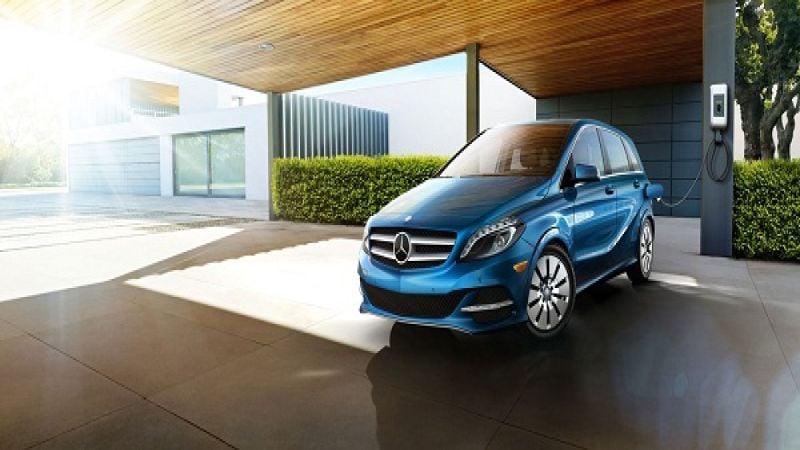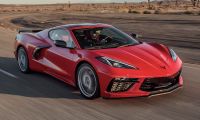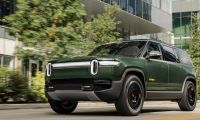When the Environmental Protection Agency estimates the fuel economy of a conventional vehicle or driving range of an electric vehicle, the agency emphasizes that the numbers they provide are only estimates and that “actual mileage may vary” based on a wide range of factors. Considering the importance of range to the practicality and perception of electric vehicles, though, it is worth investigating how the EPA arrives at the estimated value.
The EPA uses five drive cycles performed on a dynamometer under controlled conditions, which amount to speed traces simulating real-world driving, to determine the fuel economy of conventional vehicles: a city cycle (UDDS or FTP-75), a gentle highway cycle (HWFET or HFEDS), an aggressive higher-speed cycle (US06), an air conditioning cycle (SC03) and a cold-start cycle (cold UDDS). Often only the UDDS and HWFET are run, and correction factors are applied to estimate the effect of the other three cycles.
The EPA’s estimates are not perfect, but do a pretty good job of approximating what a reasonable driver should expect and provide a reliable basis for comparison between all different types of gasoline vehicles.
How is the process different for electric vehicles?
Obviously, battery electric vehicles are quite different from conventional gasoline cars and thus require different evaluation procedures to determine their efficiency and the all-important driving range. (Plug-in hybrids are also in a class of their own requiring unique test procedures, and will not be considered in this analysis for simplicity.)
In 2012 the EPA adopted a new strategy for testing the range of battery electric vehicles known as the Multi-Cycle Test (MCT) procedure. This MCT method, from the SAE J1634 standard, uses a single full depletion test to determine range and AC energy consumption for multiple drive cycle types.
As the vehicle is driven over several iterations of the standardized drive cycles on a chassis dynamometer, the EPA measures the energy drawn from the battery pack over each cycle. The vehicle’s total usable battery energy (which is obtained by charging the fully depleted battery following the MCT test to its fully charged state, and is not the total energy content of the battery) is then used to determine the electric range for each drive cycle type.
Overall efficiency is calculated from the cycle data by accounting for the charging efficiency of converting AC electricity to DC electricity to be stored in the battery.
Why not all of the cycles are used to calculate EV range
The standard MCT test procedure consists of four UDDS cycles and two HWFET cycles in a specified sequence including mid-test and end-of-test constant speed “depletion phases” which vary in duration depending on the vehicle and the size of its battery pack.
At present, only the UDDS and HWFET are required for EPA certification of a battery electric vehicle – if no other cycles are run, as is typically the case, the range and efficiency values are estimated by applying a correction factor of 0.7 to the UDDS and HWFET results to estimate the effect of the three supplementary cycles mentioned above.
Additional minor corrections are then applied to the test-obtained values before the final range and efficiency numbers go on the label.
But wait, electric vehicles are known to be significantly affected by both warm and cold temperatures - shouldn’t their impact be tested using the specially designed supplementary cycles rather than approximated with an equation? In theory, EPA official Rob French of the National Vehicle and Fuel Emissions Laboratory told Torque News. How to apply the supplementary cycles to directly evaluate these impacts, however, is not yet clearly defined.
As Mr. French pointed out, it would be difficult and time-consuming to accurately evaluate the effect of, for example, air conditioning use. In his words: “The AC [SC03 air conditioning] test is meant to capture the initial impact of AC as it works to bring the cabin temperature down after being soaked in the hot sun at 95 degrees,” he wrote in an email. “Once the cabin temperature is stabilized, the AC has to work a lot less hard, and the impact on fuel consumption diminishes. So simply running a [battery depletion] test with the AC on will dilute the impact that the 5-cycle value is intended to represent.”
The time-consuming issue comes into play because each proper AC and cold test requires that the vehicle “soak” in the prescribed temperature before the test for up to 12-36 hours in order to obtain consistently accurate results. And as French also mentioned, not much is known about the impacts of AC and cold temperatures at varying battery state-of-charge.
Finally, the 5-cycle test procedure was developed specifically for gasoline and diesel vehicles and its applicability to electric vehicles may be questionable. But at the moment it is the best we have, as we remain in the early days of electric vehicles.
How the efficiency/range testing of electric vehicles may change in the future
The SAE J1634 standard assures that modifications to the MCT test procedure to account for the unique performance of electric vehicles in cold and hot temperatures will be included “in a future revision of this document.”
Indeed, the EPA will eventually create a specific new test procedure designed for battery electric vehicles after it has collected far more data on how these vehicles perform under certain conditions.
In the meantime, Mr. French told us that the EPA “[intends] to clarify how 5-cycle testing and equations should be applied to EVs” and will provide a guidance letter on the subject to manufacturers sometime in late 2014 or early 2015.
Rest assured that although the EPA doesn’t mandate the supplementary SC03 or cold UDDS cycles yet, auto manufacturers do run these tests in vehicle development to assess and minimize the impact of climate control and cold ambient temperatures on their electric vehicles.
And the EPA is fairly accurate at predicting real-world driving range even using estimations and correction factors, as the rated range on the Nissan LEAF label (to cite a prominent example) falls roughly in the middle of the widely varying actual range experienced by drivers all over the United States.
In short, the process of evaluating an electric vehicle to accurately estimate its efficiency and driving range is not as simple as it may seem. The EPA will use data it collects from today’s electric vehicles to develop better test procedures for a future with more EV models, but for now their method seems to be the best we can do.
Check back soon here at Torque News to find out why electric range is reported without telling the full story. Rob French of the EPA will be back to explain the reasoning behind the window sticker.












Comments
hi!
Permalink
hi!
I am a students doing my MSc on electric vehicles(EVs). Can you please provide me with some hint on the EV driving range test and efficiency test.
Thanks